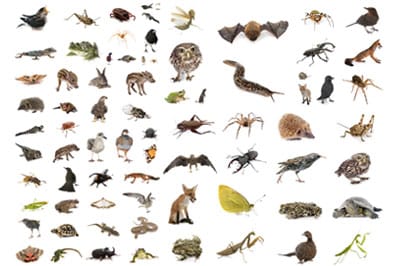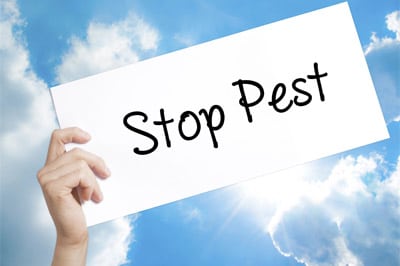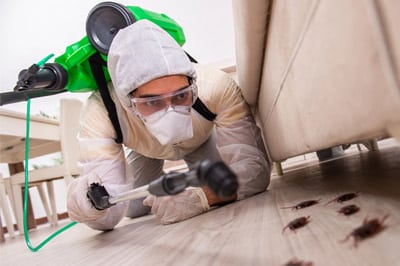Bee and Wasp Removal
Call Us Today- Home
- »
- Bee Removal
When bees establish hives near or inside homes, property owners face a delicate situation that requires careful consideration and proper action. While these pollinators play a crucial role in our ecosystem, their presence can pose safety risks, especially for individuals with allergies or when bees become aggressive in defending their territory.
In some cases our professional bee removal specialists can safely relocate bee colonies without harming them. This humane approach preserves these essential pollinators while addressing homeowner concerns.
We’ll explore how to properly identify bee problems, distinguish between different species, and understand when professional intervention becomes necessary.
Highly Trusted Bee and Wasp Removal Company

High Quality Services

Affordable & Upfront Pricing

Emergency Same Day Service
Understanding Bee Removal
Bee removal involves safely relocating established bee colonies from unwanted locations while preserving both human safety and bee populations. The process requires specialized knowledge of different bee species and professional techniques to avoid dangerous situations.
What is Bee Removal?
Bee removal is the process of safely extracting bee colonies from structures or areas where they pose safety risks or property damage. We distinguish this from extermination, as removal focuses on relocating bees alive rather than killing them.
The process involves identifying the colony location, assessing the infestation size, and carefully extracting both bees and their comb structures. Professional removal typically includes sealing entry points to prevent future colonization.
Key components of bee removal include:
- Live bee extraction using specialized equipment
- Honeycomb and brood removal from structures
- Structural repairs to damaged areas
- Prevention measures to deter future infestations
We prioritize humane methods that preserve bee populations while addressing human safety concerns. The removed bees are often relocated to apiaries where they can continue their ecological functions.
Types of Bees Commonly Removed
Honey bees represent the most frequent removal requests we encounter. These social insects form large colonies of 20,000 to 80,000 individuals and create extensive wax comb structures inside walls, attics, and other enclosed spaces.
Carpenter bees require different removal approaches due to their solitary nesting habits. They bore holes into wooden structures, creating tunnels for egg-laying rather than forming large colonies.
Bumblebees typically nest in ground cavities or wall voids with smaller colonies of 50 to 400 individuals. Their removal involves less structural work compared to honey bee extractions.
| Bee Type | Colony Size | Common Locations | Removal Complexity |
|---|---|---|---|
| Honey Bees | 20,000-80,000 | Wall voids, attics | High |
| Carpenter Bees | Solitary | Wood structures | Medium |
| Bumblebees | 50-400 | Ground, small cavities | Low |
Dangers of DIY
DIY bee removal attempts often result in aggressive defensive behavior from disturbed colonies. Honey bees release alarm pheromones when threatened, triggering mass stinging responses that can overwhelm untrained individuals.
Structural damage risks include:
- Improper wall or roof penetration
- Incomplete comb removal leading to pest attraction
- Honey seepage causing wood rot and staining
We observe that amateur removal attempts frequently scatter bees rather than eliminating the problem. Partial removals leave behind queen pheromones that attract new swarms to the same location.
Medical risks involve allergic reactions to multiple stings, even in individuals without known bee allergies. Professional beekeepers use protective equipment and smoke to calm bees during removal procedures.
Inadequate removal techniques often require expensive follow-up treatments. We recommend professional intervention to ensure complete colony extraction and proper structural repairs.
Our 5 Step Pest and Bee Control Process

Identifying and Assessing a Bee Problem
Proper identification requires distinguishing honey bees from wasps and other insects, while location assessment involves examining entry points and colony accessibility. Safety evaluation includes understanding bee behavior patterns and determining when professional intervention becomes necessary.
Recognizing Honey Bees vs Wasps vs Bumblebees
Honey bees measure approximately ½ inch in length and display a golden color with brown or black stripes. Their most distinctive feature is their noticeably fuzzy appearance, which helps them collect pollen.
Key Physical Differences:
| Feature | Honey Bees | Wasps | Bumblebees |
|---|---|---|---|
| Body texture | Fuzzy/hairy | Smooth | Very fuzzy |
| Color | Golden with stripes | Bright yellow/black | Black with yellow bands |
| Size | ½ inch | ½-¾ inch | ¾-1 inch |
| Waist | Less defined | Narrow waist | Robust build |
We observe honey bees flying in consistent patterns between their hive and food sources. They move deliberately and maintain steady flight paths.
Wasps exhibit more erratic flight patterns and aggressive behavior. They have smooth, shiny bodies without the fuzzy texture that characterizes honey bees.
Behavioral indicators help confirm species identification. Honey bees focus on nectar collection and rarely show aggression unless their hive faces direct threats.
Evaluating Bee Hive Locations
Common nesting locations include:
- Wall voids and cavities
- Attic spaces and eaves
- Chimneys and flues
- Tree hollows near structures
We examine entry points by watching bee flight patterns during daylight hours. Consistent streams of bees entering and exiting specific openings indicate established colonies.
Accessibility assessment determines removal complexity. Ground-level locations present fewer challenges than high wall cavities or roof areas.
Colony size estimation involves observing bee traffic volume. Heavy activity with dozens of bees suggests established hives with thousands of members.
Signs of established colonies:
- Wax buildup around entry points
- Honey stains on walls or ceilings
- Sweet odors near nesting areas
- Increased bee activity during warm weather
We note seasonal variations in bee activity. Spring and summer months show peak activity levels, while fall brings reduced movement as colonies prepare for winter.
Safety Considerations for Homeowners
Immediate safety risks include:
- Allergic reactions to bee stings
- Multiple sting incidents from disturbed colonies
- Structural damage from large established hives
We recommend maintaining safe distances of at least 10-15 feet from active bee colonies. Sudden movements or loud noises can trigger defensive responses.
Personal protective equipment becomes essential for close inspection. Long sleeves, pants, and closed-toe shoes provide basic protection during initial assessment.
Warning signs requiring professional help:
- Aggressive bee behavior
- Large colony size (500+ bees)
- Difficult access locations
- Previous allergic reactions to bee stings
We advise against attempting removal without proper equipment and training. Honey bee colonies can contain 20,000-80,000 individual bees during peak season.
Time of day affects safety levels. Early morning or late evening inspections encounter less bee activity than midday assessments.
Safe Bee Removal Methods
Effective bee removal prioritizes both human safety and bee conservation through proven techniques that relocate colonies rather than destroy them. Professional methods focus on live extraction, collaboration with experienced beekeepers, and strategic use of natural repellents when necessary.
Live Bee Removal Techniques
Smoke calming represents the most widely used technique for safe bee removal. We apply gentle smoke near the hive entrance to trigger the bees’ natural fire response, causing them to consume honey and become less aggressive.
The smoke confuses their communication system temporarily. This creates a window of 15-20 minutes for safe colony extraction.
Vacuum removal works effectively for smaller colonies. We use specialized bee vacuums with adjustable suction to capture bees without injury. The vacuum chamber includes soft materials to prevent harm during transport.
Cut-out removal applies to established hives in wall cavities or structures. We carefully remove sections of comb while preserving the queen and brood. This method requires protective equipment and precise timing.
Live trapping uses pheromone lures to attract scout bees into temporary hives. We place bait hives near the original colony during swarming season. The technique works best for newly established swarms.
Each method requires proper protective gear including full bee suits, gloves, and veiled helmets. We always work during daylight hours when field bees are away foraging.
When to Contact Our Team
Large established colonies require experienced beekeeper intervention. We recommend contacting local beekeepers when hives contain more than 10,000 bees or occupy significant structural space.
Most beekeepers welcome free bee colonies for their apiaries. They possess specialized equipment including hive boxes, frames, and transport containers.
Structural removal situations demand professional expertise. Wall cavities, roof spaces, and underground locations create complex extraction challenges. Local beekeepers understand building modifications needed for complete removal.
Queen identification presents another critical factor. We cannot successfully relocate colonies without capturing the queen bee. Experienced beekeepers can locate queens quickly within large populations.
Contact timing matters significantly. Spring and early summer offer the best success rates when colonies are actively building. Late fall removals rarely succeed due to reduced bee activity.
Many beekeeping associations maintain referral lists of members willing to perform removals. We suggest verifying their insurance coverage and removal experience before scheduling services.
Using Bee Repellent Safely
Natural repellents provide the safest option for temporary bee deterrence. We recommend peppermint oil, cinnamon, and citrus peels as effective non-toxic alternatives to chemical products.
Essential oil concentrations should remain below 10% to avoid plant damage. Mix 2-3 drops per ounce of water for spray applications.
Application timing affects repellent effectiveness significantly. We apply treatments during early morning or evening hours when bee activity decreases. Avoid midday applications when bees are most active.
Targeted placement focuses repellent use around entry points rather than direct hive contact. Spray doorways, windows, and outdoor dining areas where human-bee conflicts occur.
Chemical repellents require extreme caution. Never apply pesticides directly to flowering plants that bees visit for nectar collection. Read all product labels carefully before use.
Temporary solutions work best for short-term protection during outdoor events. Repellents do not solve established hive problems and may increase bee aggression if overused.
We strongly advise against using repellents as permanent bee removal solutions. They provide temporary relief while arranging professional live removal services.
Our Professional Bee Removal Services
Professional bee removal services provide safe and effective solutions for bee infestations while prioritizing the preservation of beneficial honeybee colonies. These services combine specialized knowledge, proper equipment, and humane relocation practices to address bee problems without harming these essential pollinators.
Advantages of Hiring Our Team
Professional beekeepers bring specialized training and experience that makes bee removal both safer and more effective than DIY approaches. We have the proper protective equipment and understand bee behavior patterns.
Safety Benefits:
- Professional-grade protective suits and equipment
- Knowledge of bee aggression triggers
- Proper handling techniques to minimize stings
- Experience working at heights and in confined spaces
Bee Preservation Focus:
Most professional services prioritize live removal and relocation. We relocate honeybees to apiaries where they continue pollinating crops and producing honey.
This approach protects the ecosystem while solving your bee problem. Professional beekeepers can distinguish between beneficial honeybees and aggressive species that may require different handling approaches.
Structural Expertise:
We understand building construction and can safely access bee colonies in walls, attics, and other structural areas. Professional services include necessary repairs to prevent future infestations.
What to Expect During Professional Bee Removal
The professional bee removal process begins with a thorough inspection to identify the bee species and locate the colony. We assess the situation before developing a removal strategy.
Initial Assessment:
- Species identification
- Colony size estimation
- Entry point location
- Structural access requirements
Live Removal Process:
We use specialized vacuum equipment and bee-safe removal techniques. The queen bee is carefully located and captured first, as worker bees follow her.
Honeycomb and honey are completely removed to prevent attracting other insects. We seal all entry points with appropriate materials.
Timeline Expectations:
Simple swarm removals take 1-2 hours. Established hives in walls or structures require 3-6 hours depending on accessibility and colony size.
Post-Removal Period:
Some surviving bees may hover around the former entry point for 3-10 days. This behavior is normal as stragglers search for their relocated colony.
Cost Factors and Considerations
Professional bee removal costs vary significantly based on location, accessibility, and structural work required. We consider multiple factors when pricing removal services.
Key Cost Variables:
- Colony location: Ground-level swarms cost less than wall or roof extractions
- Structural access: Cutting into walls or ceilings increases costs
- Repair work: Professional services include restoration of removed materials
- Travel distance: Remote locations may include additional service fees
Value Considerations
Our professional removal services includes warranties on work performed. We provide comprehensive solutions including repairs, sealing, and cleanup. This eliminates the need for separate contractors and ensures proper completion of all work.

Why Hire Our Team
When bees establish colonies near or within your property, the situation requires careful handling to protect both your safety and these vital pollinators. While attempting DIY removal might seem cost-effective, disturbing bee colonies without proper expertise can lead to dangerous situations, particularly for individuals with allergies.
Our professional bee removal team combines specialized equipment, extensive training, and humane relocation techniques to safely remove bees while preserving their colonies for the ecosystem. We understand bee behavior patterns and possess the necessary tools to access difficult locations without causing property damage or provoking defensive responses from the bees.
Professional bee removal goes beyond simply addressing the immediate problem. We implement comprehensive solutions that include locating and safely extracting queen bees, sealing entry points, and establishing preventive measures to discourage future infestations, ensuring long-term results for your property.
Expert Assessment and Identification
We begin every bee removal project with a comprehensive assessment of your bee infestation. Our trained specialists can accurately identify different bee species, including honeybees, carpenter bees, and other varieties that may have established colonies on your property.
Species identification is critical because different bees require different removal approaches. Honeybees, for example, are protected in many areas and must be relocated rather than exterminated.
Our team evaluates the size and location of the colony to determine the most effective removal strategy. We assess structural damage, entry points, and potential hazards before beginning any work.
This thorough assessment prevents incomplete removals that could lead to re-infestation. We identify all hive component including brood, honey stores, and queen location to ensure complete colony removal.
Risk Reduction and Safety Protocols
Professional bee removal significantly reduces the dangers associated with DIY removal attempts. We follow established safety protocols that protect both our team and your household from bee stings and related injuries.
Our safety measures include:
- Full protective gear and equipment
- Emergency response procedures
- Insurance coverage for all work
- Trained personnel with experience handling aggressive swarms
We understand bee behavior patterns and can predict defensive responses during removal. This knowledge allows us to time our work appropriately and use techniques that minimize bee agitation.
Property protection is another key focus of our safety protocols. We seal entry points, remove attractant materials, and provide recommendations to prevent future infestations.
Our team carries liability insurance and follows industry standards for safe bee removal practices. This protection gives you peace of mind throughout the removal process.





